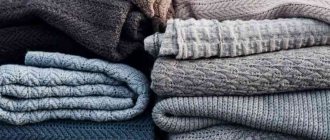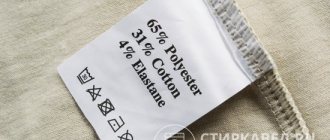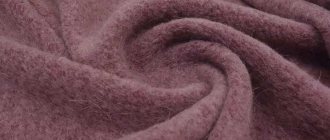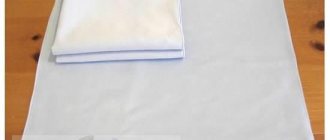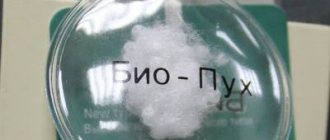Features of wool products
There are several types of wool fibers and fabrics, which differ in the method of manufacture, origin, and the presence of synthetic impurities:
- Angora is a wool fabric made from goat or rabbit fluff. It is very pleasant to the body and is light and has low density.
- Camel wool is a 100% natural, environmentally friendly product. Its main properties are antibacterial, antistatic, light, hypoallergenic.
- Cashmere is a wool or wool blend fabric made from the down of cashmere mountain goats, synonymous with airiness, softness, and a symbol of prosperity.
- Sheep wool is a common type, known for its medicinal properties, and is considered one of the warmest.
- Merino – obtained from the wool of “fine-wool” Merino sheep. The yarn is smooth, silky, flexible, thermally insulating, and can also repel odors.
- Mohair is a fabric that partly consists of angora (about 80%), the remaining 20% is synthetic fibers. Mohair is less susceptible to deformation, is hypoallergenic and very durable.
Depending on the type, the properties and, consequently, the care requirements change. However, all types consist entirely or partially of natural hair, which, like human hair, is covered with tiny scales. Under the influence of water, temperatures and cleaning agents, these scales open, which makes the wool especially vulnerable. Left without protection, the pile sticks together, becomes compacted, deformed, and loses its airiness and softness. Therefore, it is important to carry out the process of washing a sweater, socks, hat or trousers made of wool as carefully as possible.
Washing rules
Some people prefer to buy synthetic clothing because natural wool is quite difficult to care for.
There are several rules that will help you wash woolen items correctly:
- It is better to clean them as rarely as possible, because frequent exposure to detergents harms the fibers.
- Before washing, be sure to examine the sew-in tag. It indicates information about the acceptable mode, washing and ironing temperature.
- Some items can only be washed by hand, this is also stated in the instructions.
- To reduce damage to the product, it is better not to wash it, but to get rid of unpleasant odors by airing it in the fresh air.
- It is advisable to clean heavy stains before washing using a dry method.
The wool has stretched
If washing rules are not followed, products made from natural wool may stretch. To partially restore the original appearance of a thing, you need to turn it inside out. Then put a layer of gauze or thick natural fabric on top and iron it with an iron. When the product is not completely deformed, but a separate element, for example, sleeves, is stretched, they should be soaked for 10 minutes in warm water. Then dry with a towel and leave to dry on its own.
For reference! When the item stretches by more than 1 size, the item is immersed in hot (40-50 C) water. But, it is necessary to take into account that this technique is extremely aggressive towards woolen products and destroys the structure of the material. In addition, clothing may shrink more than necessary. For this reason, this technique is used only when other options have not given a positive result.
What can't you do?
Since woolen fabrics are delicate, there are precautions that will help protect them from damage. Here are some recommendations common to all clothing of this type:
- Wool does not tolerate hot water, boiling is also prohibited. In addition, you should not allow sudden changes in temperature during the washing process.
- It is not recommended to soak the material for a long time; the maximum allowable time is 30 minutes.
- You cannot twist, squeeze, stretch, or actively rinse the wool, since under the influence of external force it deforms very quickly.
- The spin speed in the washing machine should be set to the minimum.
- Washing with aggressive detergents is prohibited; low-quality powders and gels should also not be used.
- You cannot pour dry powder directly onto woolen fabric; before use, it must be dissolved in a large amount of water and whipped into foam.
- You cannot dry wool items hanging, that is, on ropes or hangers. Since the fabric does not tolerate high temperatures, it is not worth drying it on a radiator, with a hairdryer or other thermal influences.
- Whether ironing is allowed or not can be found out from the instructions on the label. Some types are tolerant of hot steam, while others may lose their shape and softness.
Water temperature
Wool should be washed at a temperature not exceeding 40°C; washing at 30°C is optimal. If you use hot water, the product loses strength, as a result of which it can shrink, become hard and unpleasant to the touch. Raising the temperature to 60-70°C is permissible only if you need to make a sweater a couple of sizes smaller, but you should do this as carefully as possible.
Detergents
Conventional washing powders are not suitable for materials made from natural wool fibers. It is recommended to use special ones for wool and silk, which prevent caking and do not destroy the structure. However, washing gels marked “For delicate fabrics” are considered more effective and gentle. They promote high-quality removal of contaminants and are washed out better without leaving streaks.
Unfortunately, no powder or gel will help maintain the softness of wool if the water in which the wash is carried out has an increased level of hardness. You can find out by observing how the liquid from the tap behaves when boiling. If scale remains on the walls of a saucepan or kettle, the water hardness is increased. In this case, it is recommended to use softeners and conditioners for washing, which will give clothes softness and freshness. For the same purpose, you can take a 9% vinegar solution. Acid is also suitable for preserving color: pour it into the conditioner compartment if the item needs to be washed in a washing machine, or use it when washing by hand.
Attention! If you urgently need to remove a stain, but you don’t have a suitable product at hand, you can use shampoo. It has a more gentle effect than conventional products.
Procedure
Woolen items should be washed in the correct order, strictly following the following procedure:
- Preparing for washing. Fasten all the buttons and clasps, if any, remove everything from the pockets, and turn the sweater inside out.
- Removing dirt with a brush. You can clean the wool with a small amount of glycerin heated in a water bath. It is worth considering that the bristle of the brush should be very soft and the friction very weak. Hydrogen peroxide, which should be moistened with a cotton pad, also removes stains well.
- Soak. This step is necessary if the dry method did not help, there are strong stains left that may not be washed off. You should not soak things for a long time, as staying in water destroys the structure of the fibers. You can leave them in the detergent solution for a maximum of an hour.
- Wash by hand or using an automatic machine. In the first case, it is easier to control the degree of damage, while the second method requires less time and effort. It is important to wash no more than 40-45 minutes.
- Drying. On a horizontal surface at room temperature.
- Ironing. According to the directions on the product label.
What to wash: store-bought and folk remedies
Ordinary powder can ruin a woolen item due to its aggressiveness, so you need to approach the choice of detergents with all responsibility.
Purchased funds
Nowadays there is a large selection of washing powders and detergents in stores. For washing wool, choose special formulations. Powder or gel for delicate items is suitable. To make clothes soft and fluffy, use special conditioners and rinses.
If you hand wash, you can use hair shampoo, but it will be more difficult to rinse out. The water will have to be changed 2-3 times more. But it is not recommended to use dishwashing detergents and soaps, since the alkalis they contain can damage the fibers. An exception is laundry soap, since it is predominantly acidic rather than alkali. Don't rub things with it. Dissolve soap shavings before washing.
Important! Do not use laundry soap on white items as they may turn yellow.
Mustard
Folk remedies also effectively deal with stains on woolen items. Mustard powder should be used as follows:
- Mix a glass of dry powder with a small amount of cold water, then add hot water and leave for 2-3 hours.
- After time, strain the mixture through several layers of gauze.
- Wash things in the prepared solution. No need to add powder or gel.
- Rinse and dry.
Bean decoction
Follow these steps:
- Boil a kilogram of beans until half cooked in 5 liters of water.
- Let the broth cool until warm.
- Strain before using.
- Wash woolen items in it.
Potato decoction
Potatoes are used according to a similar principle:
- First prepare the decoction. To do this, boil 1 kg of potatoes in 10 liters of water.
- When the liquid becomes warm, strain it.
- Use the decoction for washing without adding powder.
It is better to rinse in a special conditioner.
Features of washing in a washing machine
If you don’t have the time or opportunity to hand wash, for example, a wool blanket or sweater, a washing machine will help.
Before the washing procedure, you must do the following:
- Check pockets for forgotten small items: coins, pins, etc. They can ruin both clothes and equipment.
- Remove all removable accessories and cover non-removable ones with nail polish - this way the possibility of rust or other damage is minimized.
Nowadays, most models of equipment have a “For delicate items” mode, which helps to remove dirt as gently as possible: the drum makes the least number of revolutions, practically without damaging the sweater.
In the absence of these modes, wool should be washed in a washing machine using “Quick 30°” or “Hand Wash”, spin – minimum number of revolutions. It is better to add an additional rinse.
Preparation process
Before you wash sheep's wool at home, you need to clean out the debris. Then the products are divided into white, colored and dark. They also select very dirty items with stains. If there are heavily soiled areas, clean them using a clothes brush or special products. If there are holes, the clothes must be sewn up to prevent them from tearing further. When washing for the first time, it is advisable to do a shedding test.
Proper drying
Since it is prohibited to dry products in a vertical position, it is necessary to place them on a horizontal surface, for example, on a table. Under a woolen item you need to place a fabric that absorbs moisture well, a terry towel will do. Products must be turned over every half hour to hour so that they dry evenly. Of course, this method requires some effort, but it will help maintain shape. Drying can be done outdoors, but it is better to avoid direct sunlight.
How to bleach a woolen item?
Everything white eventually becomes dull, yellowish or grayish. However, if the whiteness of ordinary picky material is restored using boiling and soaking with bleach, then such methods are not suitable for delicate ones.
Here are a few methods to help whiten wool:
- Baking soda and ammonia work well with old yellowness. 1 tbsp. l. It is necessary to dilute it in 5 liters of cool water, add 2-3 drops of ammonia, soak the product in the resulting liquid for 30 minutes, wash it in an automatic machine or by hand.
- Hydrogen peroxide will help bleach white woolen items. It needs to be added to water (1:8), then soak the clothes in this solution for an hour.
- Dissolve about 500 g of salt in 5 liters of water, leave the wool for half an hour, then wash with conditioner.
Removing stains
To ensure that your clothes retain their appearance and shape longer and to remove stains of any origin, you can turn to dry cleaning services. You can also tidy up woolen items at home. Special stain removers for such materials are commercially available. You should strictly follow the instructions and observe the soaking time.
Useful
It is better to erase local contamination from the borders, moving to the middle. This will prevent the stain from spreading.
Sequence of stain removal steps:
- clean the item first with a dry and then with a damp brush to remove dust;
- turn inside out;
- place a piece of cotton fabric under the treated area;
- apply the product;
- remove the stain.
Attention
Before using the stain remover, it is advisable to apply it to the wrong side so as not to spoil the clothes.
Among the available wool products you can use:
- glycerol;
- potato starch;
- turpentine;
- kitchen or sea salt;
- petrol;
- powder for cleaning teeth;
- hydrogen peroxide;
- talc;
- laundry soap;
- alcohol (can be purchased at a pharmacy).
Fresh stains are removed with soap. It is necessary to prepare a solution at a warm temperature. Rub the stain. Rinse in cool water. Squeeze a little. Then leave for 5 minutes. in a mixture of vinegar and water (1 to 1). And rinse again.
If there are greasy stains on the product, cover the stained areas with dry powder for cleaning teeth or talcum powder. After three and a half hours, the item is gutted and then washed.
Useful
Do not wash stains from blood, milk, or eggs in water heated to a high temperature.
Tips for care and use
It is very important to properly care for woolen items so that they last as long as possible. Here are some recommendations:
- A woolen item that has shrunk after washing should be slightly wetted, ironed through gauze at a low temperature, smoothing it, and given the desired shape.
- You should not try to pull out the pills from a sweater with your hands, much less cut them off with scissors. There are scallops and electric machines for this.
- You should not overuse dry cleaning, even if dirt can only be removed with its help. The substances used in the cleaning process gradually corrode and thin the fibers.
- The ties can be removed using a crochet hook: with the tool you need to pick up the loop that has come out from the inside and carefully pull it back.
- Woolen clothes should be stored on a shelf or in a drawer; they may become deformed on hangers.
- Moisture is the enemy of wool, so you need to avoid damp areas when choosing a storage location.
